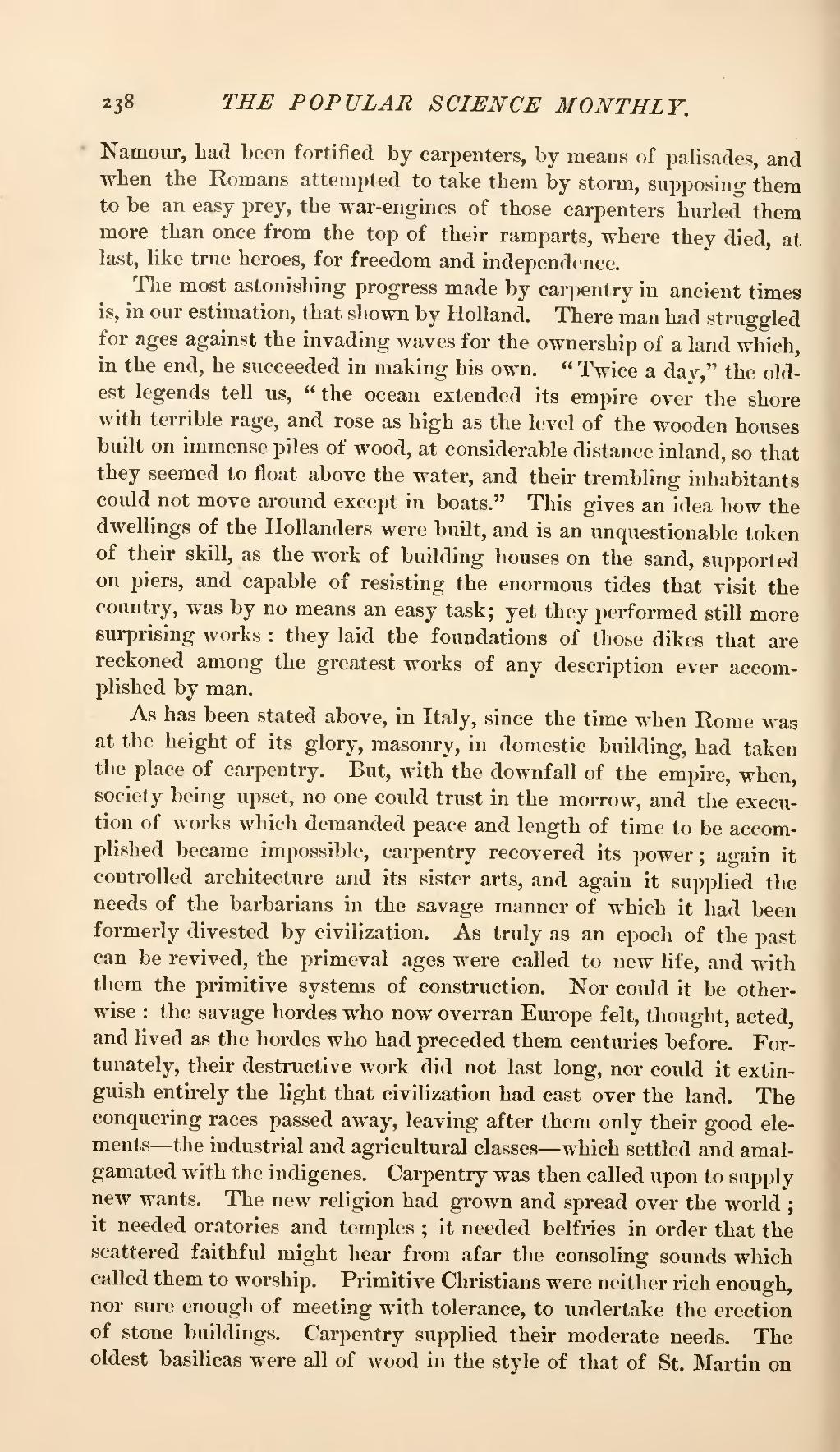Namour, had been fortified by carpenters, by means of palisades, and when the Romans attempted to take them by storm, supposing them to be an easy prey, the war-engines of those carpenters hurled them more than once from the top of their ramparts, where they died, at last, like true heroes, for freedom and independence.
The most astonishing progress made by carpentry in ancient times is, in our estimation, that shown by Holland. There man had struggled for ages against the invading waves for the ownership of a land which, in the end, he succeeded in making his own. "Twice a day," the oldest legends tell us, "the ocean extended its empire over the shore with terrible rage, and rose as high as the level of the wooden houses built on immense piles of wood, at considerable distance inland, so that they seemed to float above the water, and their trembling inhabitants could not move around except in boats." This gives an idea how the dwellings of the Hollanders were built, and is an unquestionable token of their skill, as the work of building houses on the sand, supported on piers, and capable of resisting the enormous tides that visit the country, was by no means an easy task; yet they performed still more surprising works: they laid the foundations of those dikes that are reckoned among the greatest works of any description ever accomplished by man.
As has been stated above, in Italy, since the time when Rome was at the height of its glory, masonry, in domestic building, had taken the place of carpentry. But, with the downfall of the empire, when, society being upset, no one could trust in the morrow, and the execution of works which demanded peace and length of time to be accomplished became impossible, carpentry recovered its power; again it controlled architecture and its sister arts, and again it supplied the needs of the barbarians in the savage manner of which it had been formerly divested by civilization. As truly as an epoch of the past can be revived, the primeval ages were called to new life, and with them the primitive systems of construction. Nor could it be otherwise: the savage hordes who now overran Europe felt, thought, acted, and lived as the hordes who had preceded them centuries before. Fortunately, their destructive work did not last long, nor could it extinguish entirely the light that civilization had cast over the land. The conquering races passed away, leaving after them only their good elements—the industrial and agricultural classes—which settled and amalgamated with the indigenes. Carpentry was then called upon to supply new wants. The new religion had grown and spread over the world; it needed oratories and temples; it needed belfries in order that the scattered faithful might hear from afar the consoling sounds which called them to worship. Primitive Christians were neither rich enough, nor sure enough of meeting with tolerance, to undertake the erection of stone buildings. Carpentry supplied their moderate needs. The oldest basilicas were all of wood in the style of that of St. Martin on
